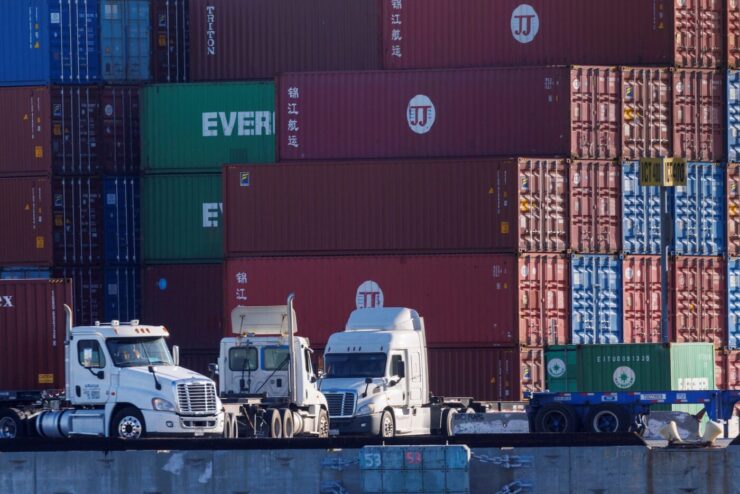If you’re a business owner, you know that managing the logistics of your operation is key to success. But have you ever heard of intermodal trucking? This type of transport offers great benefits for those who take the time to understand and make use of it. In this blog post, we’ll explain what intermodal trucking is and why it’s worth your consideration!
Introduction to Intermodal Trucking
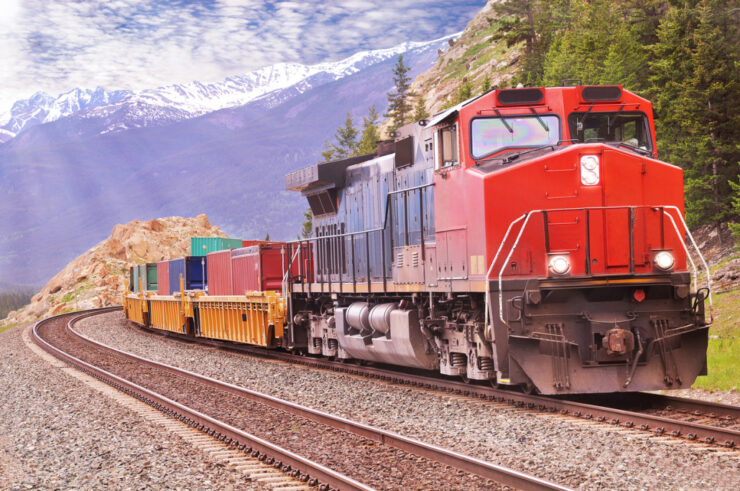
Intermodal trucking is the use of multiple transportation modes (such as rail, ship, and truck) to move goods from one point to another. This method of shipping has several advantages over traditional lone-mode shipping, including greater efficiency and cost savings.
By utilizing services like freight forwarding to coordinate the movement of goods between multiple transport modes, shippers can significantly reduce costs while maximizing speed and delivery times.
Advantages of Intermodal Trucking
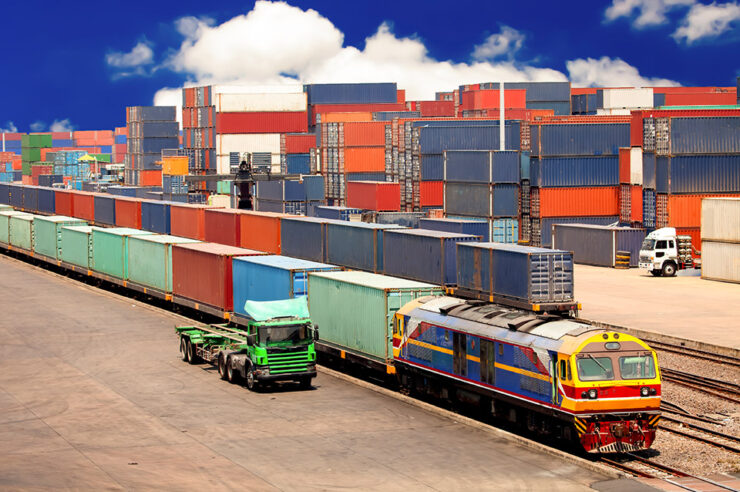
Here are some of the advantages to consider when adopting intermodal trucking:
- Economical: Intermodal trucking is more cost-effective than traditional trucking because it reduces fuel costs, vehicle insurance premiums, and other expenses linked to long-distance transportation.
- Flexible: By combining rail and truck together, cargo can be shipped over longer distances than the road alone is capable of. The exclusive use of one mode for a specific part of your journey provides added flexibility in routes.
- Sustainable: This transportation reduces costs associated with fuel consumption and CO2 emissions due to fewer trips needed for freight delivery. It also decreases harmful ground impacts due to lighter load weight on the roads while trucks cover shorter haul lengths compared to long haul trucks operating on regular highways.
- Safer: Intermodal trucking also provides greater security than traditional running on highways as cargo containers are tracked throughout their journey across multiple integrated modes of transport providing traceability through real-time tracking capabilities.
- Faster Delivery Times: Combining multiple modes allows deliveries to occur faster and more efficiently by moving freight using fewer vehicles over long distances quickly and economically. This helps reduce congestion on the roads while ensuring timely arrivals at their destinations without compromising safety and quality standards.
Cost Savings
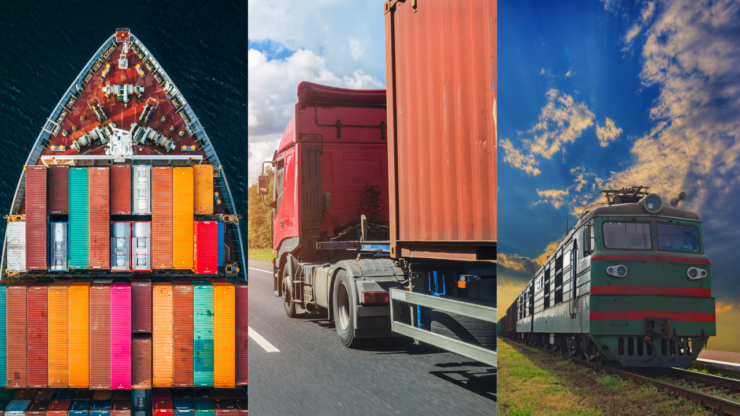
A major benefit of using intermodal freight transportation is improved efficiency and cost savings for shippers. Employing various forms of transportation prevents wear and tear on trucks which leads to longer-lasting vehicles, fewer delays, and overall higher efficiency rates. Many commercial fleets report a 10-15% increase in on-time delivery when using intermodal services. Moreover, these services can reduce operating costs for fleet owners due to less fuel consumption and no boarding or waiting time for drivers after the cargo has been delivered onto trains or ships.
For consumers opting to ship goods over long distances, intermodal transportation will often offer more economical shipping as well as quicker delivery times compared to traditional shipping methods such as road haulage alone. Doing so decreases costly inventory expenses while increasing efficiency rates which in turn boosts customer satisfaction levels. Coupled with its benefits such as increased safety procedures while goods are transported across multiple countries, Intermodal trucking can be thought of as an attractive choice to the consumer who desires speed, cost savings, and reliability all simultaneously.
Environmental Impact

Intermodal trucking activities can significantly reduce greenhouse gas (GHG) emissions which are considered a major environmental pollutant. In one example, it has been shown that switching transportation modes or even shortening distances can reduce GHG emissions by over 80%. Additionally, shifting to intermodal transport can help organizations cut back on energy usage for freight transportation since railroads use approximately four times less fuel than their road-based peers.
Not only does intermodal equipment allow for better fuel efficiency, but it also enables companies to carry more cargo in fewer shipments due to larger container loads making fewer trips which are less frequent yet more efficient in terms of cost, fuel use, and emissions per mile traveled. Most notably, it has been found that using an intermodal distribution system may also help reduce congestion on roads by reducing truck miles traveled by as much as 15%. Directly or indirectly related to these impacts are infrastructure costs associated with degradation due to heavy traffic – leading to reduced capital outlays for individuals and businesses if intermodal trucking practices take greater precedence as opposed to solely utilizing roads for shipments or cargo movement.
How to Get Started
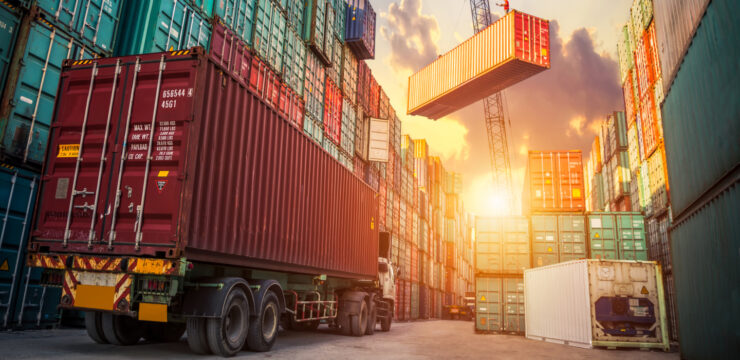
Getting started with intermodal trucking is easy, but there are several factors to consider before making a decision. Here are some tips to get started:
- Analyze Your Freight: The most important first step when considering intermodal is to analyze your current mode of transport and determine which routes may be suitable for intermodal options. Consider both regular shipments as well as special ones such as seasonal products or even hazardous materials that need extra care when transported by train or sea.
- Urban Areas for Transportation Hubs: Urban areas provide more efficient service options for connecting different modes of transportation thus shortening travel time and increasing transit flexibility for shippers and receivers alike. Choose a transportation hub that meets your needs, such as handling multiple docks and carriers at once in order to move freight efficiently.
- Compare Costs & Carriers: Gather shipping costs from different companies based on various locations, cargo weight, and delivery timeframe so you can compare prices across all available modes of transport in order to find the best deal – it’s also important to consider other variables such as safety records, insurance coverage, etc., when choosing carriers.
- Contact Shippers & Carriers: Once you have organized all the information required, contact shippers and carriers who are capable of providing intermodal services at reasonable prices; be sure to discuss service commitments prior to agreeing on pricing structures in order to gain confidence with your intermodal plan before committing resources long-term basis.
Conclusion
In conclusion, intermodal trucking is an incredibly efficient and economical shipping option. By leveraging the strength of several transportation modes within its network, it helps businesses reduce their costs while ensuring their goods are safely delivered on time. It’s faster, more secure, and integrated than traditional truck-only deliveries. Intermodal transport also has the potential to drastically reduce air pollution levels by reducing the number of trucks on the road.

